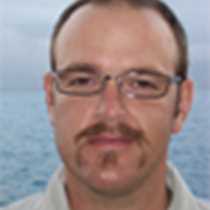Out West!
Isabela and Fernandina can bring a vision of a primal earth to our minds. We started our day early passing close to the island of Roca Rodonda just north of Isabela Island. Bird activity was impressive with Nazca boobies, Galápagos Shearwaters, Red Billed Tropic Birds, and Galápagos Petrels to welcome us.
The currents appeared strong which is normal here and as we circumnavigated the island, we noticed an incredibly large yellow fin tuna breaching as it chased its prey. With continuation to the northern tip of Isabela, we spotted a large commercial fishing vessel passing off our bow at a distance of four nautical miles. We made note of this and informed local port authorities to check this ship to guarantee the protection of the National Park.
King Neptune and his loyal subjects made an appearance to change all pollywogs into shellbacks as we crossed the equatorial line heading south.
Arriving to the northern tip of Isabela at Punta Vicente Roca is analogous with being present at a “geological birth.” The terrain is rough as lava flows and cinder buildup are present at the massive cliffs found here. Starting our visit with a panga ride in the Zodiacs, we found an abundance of life: Galápagos fur seals, flightless cormorants, penguins, and the ever present marine iguana. Returning to the National Geographic Endeavour, we witnessed a few Mola Molas (Pacific sunfish).
“Al Agua” exclaimed the Naturalists as we entered into the cold waters that are affected by the Cromwell current. Pacific green sea turtles appeared uninterested in us as we passed slowly over and a red Lipped Batfish and octopus made an appearance to show us how strange nature is in its design.
A welcomed lunch returns our energy and we continue into the afternoon navigating to Fernandina Island.
Espinoza Point appears inviting as the sun finally peeks through the mist. Our explorers are off again, this time to step foot on the youngest of our islands, Fernandina. Iguanas, Iguanas, Iguanas are everywhere as we continue on our hike. This population is robust due to the nutrient rich waters upwelling here that allow ample algal growth.
Lava flows under our feet change in composition as we learn about A’a and P’hoe hoe. Heading to the point, we finish our wonderful afternoon with cormorants and the occasional Galápagos hawk. It appears that life has found a way here, out west.




